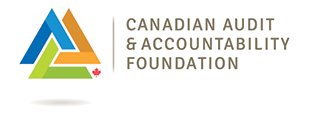5 Main Steps That Audit Teams Should Follow When They Use Sampling
Choosing an audit topic is a crucial moment in the performance audit process. Ultimately, audit topic selection reflects on the credibility and the relevance of the audit organization and on the usefulness of its audit reports. A good way of selecting the right audit topic is to aim to add value for the recipient of the audit report. A value-added audit is more likely to be well received and to lead to concrete improvements. But what does “value-added” really mean?
There are several considerations involved in defining value-added:
Investigate and analyze the population of interestThe first step in any performance audit sampling process should be a comprehensive review of the available administrative data (i.e., data collected by government institutions or agencies for public administration purposes) relevant to the audit topic. This applies to both generalizable and purposeful sampling. Reviewing the available data will allow auditors to identify populations to assess whether these populations are sufficiently homogeneous, and to determine whether the data is of sufficient quality to make sampling possible. Completing this review will help auditors take decisions about sampling objectives and appropriate sampling methodology. The review in itself may also provide useful evidence that might serve to support audit observations or as contextual information in the audit report. |
|
Select the right sampling approachA very important decision auditors must take once they have determined that they can and will be using sampling to gather audit evidence is whether they should use a generalizable sampling approach or a purposeful sampling approach. This decision is governed by the need to determine which approach best enables the efficient collection of sufficient and appropriate evidence to meet the testing objective. Selecting the right sampling approach will depend on:
|
|
Prepare a sampling planOnce a sampling approach has been selected, the next step is preparing a detailed sampling plan. The key elements that should be in the sampling plan, are:
|
|
Execute the planDuring the examination phase of a performance audit, the auditors conduct the procedures they have described in their audit plans, including sampling procedures, and document the results of these procedures. However, in some cases, it may be impossible to implement the sampling procedures exactly as planned and then the auditors need to modify the plan to adjust to the circumstances. |
|
Report the resultsThere are a few general guidelines that auditors should apply when reporting audit findings that were obtained through generalizable or purposeful sampling. These guidelines are:
|
Liked it?
You can find further information about on sampling for performance audits in our Practice Guide to Sampling Methodology for Performance Audits.


